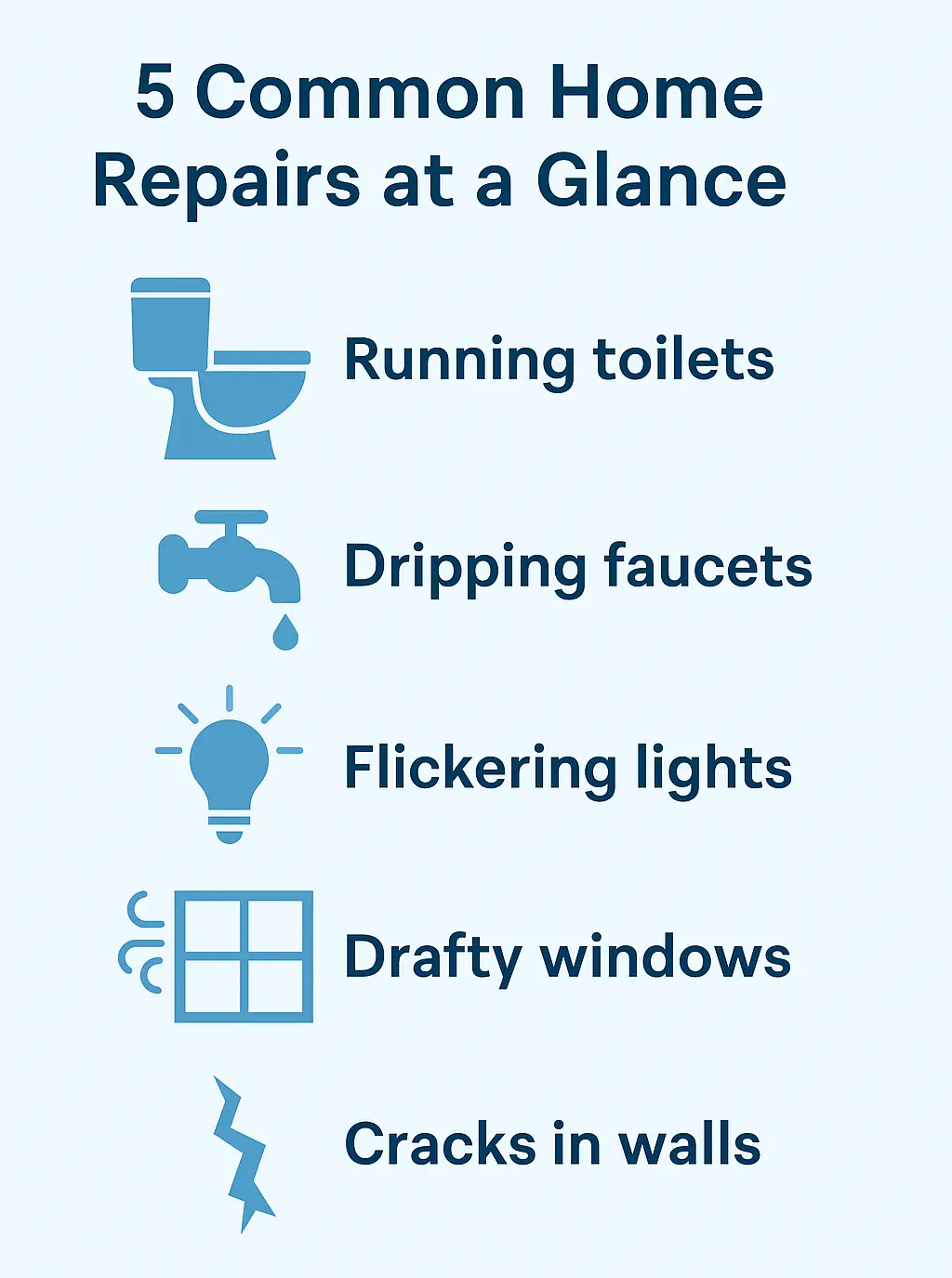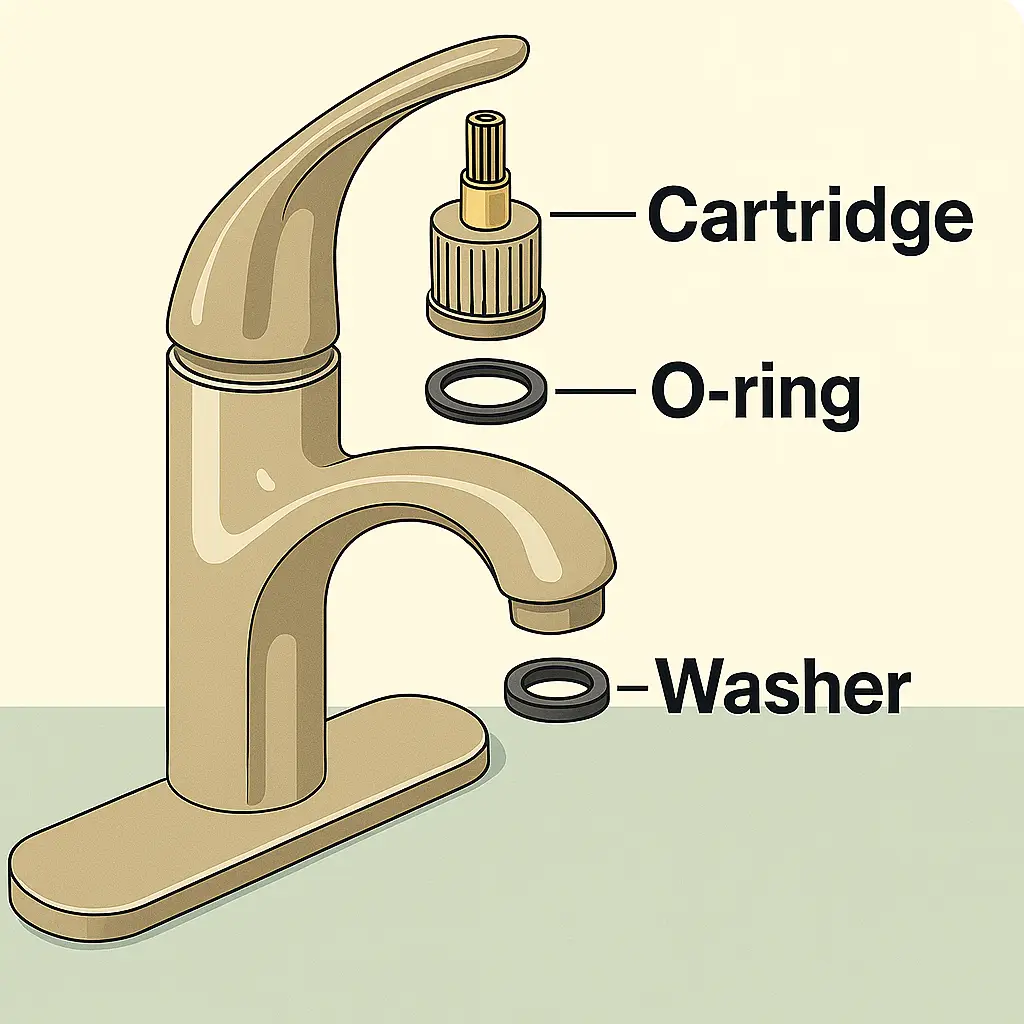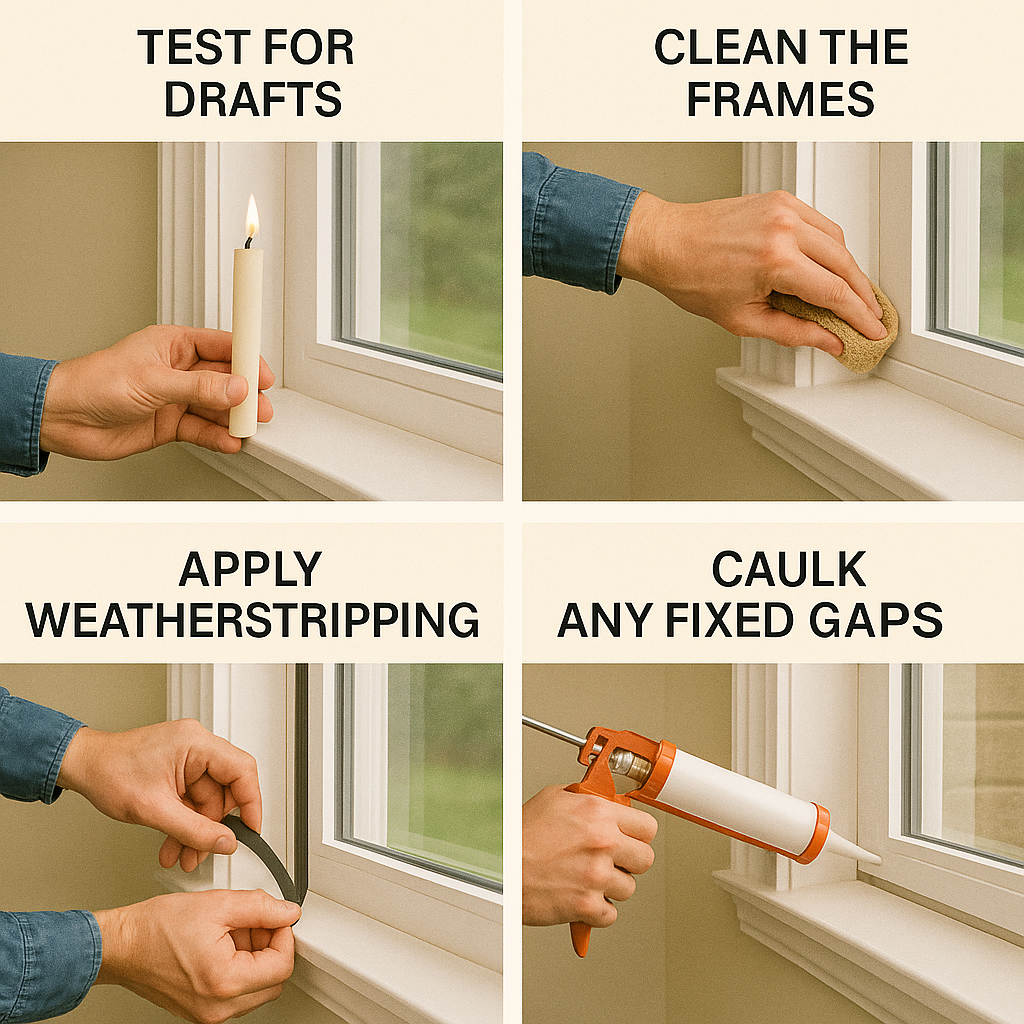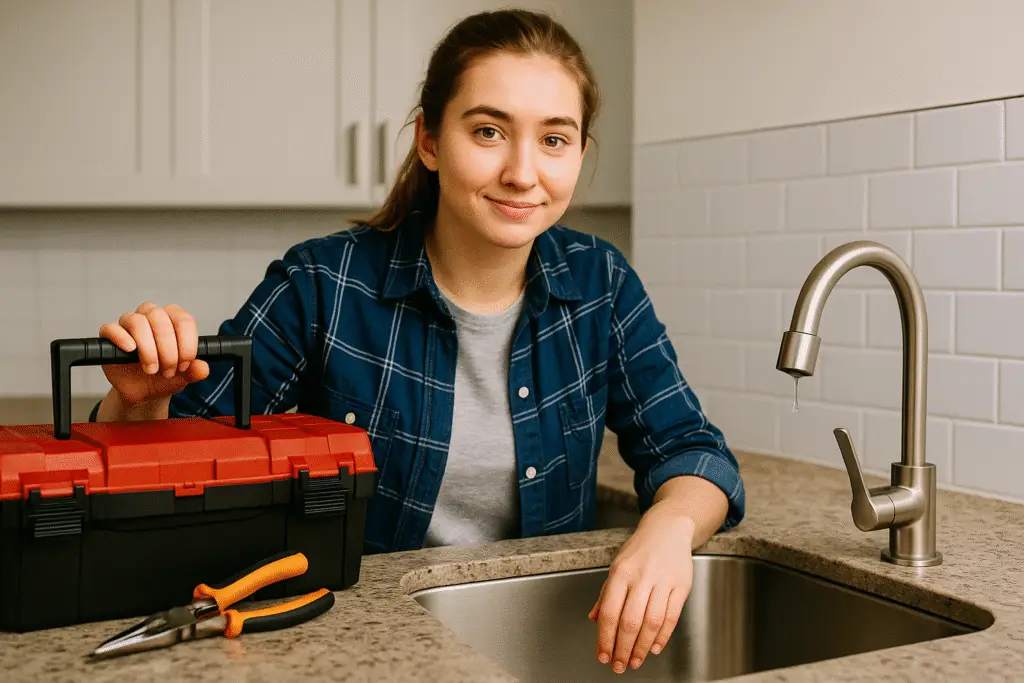Owning a home means you’re always just one leaky faucet or flickering light away from your next repair job. But here’s the good news: many of the fixes that seem like weekend-wreckers are surprisingly simple — and totally doable with a little know-how. Whether it’s a mysterious drip or a wall crack that wasn’t there yesterday, we’ll show you how to take action with confidence. This is your no-nonsense, homeowner-friendly guide to solving the everyday common home repairs that sneak up on every house.
How Much Should You Be Setting Aside for Home Repairs & Maintenance?
Use our free Home Repair Reserve Calculator to see how much you should be setting aside for your home each year.
Why Staying on Top of Repairs Matters
Think that drip under the sink is harmless? Or that tiny wall crack can wait? The truth is, small problems have a way of becoming big ones — and fast. That flickering light might be a loose bulb… or it could be a red flag for a wiring issue. Acting early not only keeps your home safe and efficient, it saves money and stress.
It’s like changing the oil in your car. Regular attention keeps things humming, prevents breakdowns, and gives you peace of mind. Your home deserves the same TLC.
What Are the Most Common Home Repairs?
The most common home repairs — in order of how frequently homeowners report them — include:

- Running toilets – A leading cause of household water waste, often due to worn flappers or faulty fill valves.
- Dripping faucets – These leaks can silently waste thousands of gallons a year if left unchecked.
- Flickering or faulty light fixtures – Usually caused by loose bulbs, bad switches, or outdated wiring.
- Drafty windows and doors – Air leaks make your HVAC work harder and spike your energy bills.
- Cracks in walls or ceilings – Often harmless, but some can signal shifting foundations or moisture issues.
These issues are typically easy and affordable to fix — especially when caught early — and they’re the first line of defense against larger, more expensive repairs.
Common Household Problems and What to Do
Running Toilets
Hear that phantom flush? A running toilet is the stealthy water waster in many homes. It can burn through up to 200 gallons a day. The usual suspects: a worn flapper, misaligned float, or finicky fill valve.
- Difficulty: 2/5
- Time Estimate: 20–30 minutes
- Estimated Cost: $8–$20
- Tools Needed: None, or pliers if adjusting the chain
Step-by-Step:
- Remove the tank lid and check the flush cycle.
- If the flapper’s leaking, drain the tank and replace it.
- Adjust the float so water stops before reaching the overflow pipe.
- Reattach and test.
Pro Tip: Drop in food coloring to detect silent leaks.
Watch: Fix a Running Toilet – Home Repair Tutor
Dripping Faucets
A dripping faucet might seem like a minor annoyance, but over the course of a year, one drip per second can waste more than 3,000 gallons of water — enough for over 180 showers. These leaks are often caused by worn-out washers or O-rings, mineral buildup, or a deteriorating valve seat. Fixing it quickly saves water and can reduce your utility bills.
- Difficulty: 2/5
- Time Estimate: 30–45 minutes
- Estimated Cost: $5–$15
- Tools Needed: Adjustable wrench, screwdriver, replacement washer/O-ring kit, towel
Step-by-Step:

- Turn off water supply under the sink.
- Plug the drain to catch any rogue screws.
- Remove the handle and loosen the packing nut.
- Pull out the stem and inspect the washer and O-rings.
- Replace worn parts and reassemble.
- Turn water back on and test.
Pro Tip: Snap a photo before disassembling so you know how it all goes back together.
Watch: How to Fix a Leaky Faucet – This Old House
Flickering Lights
One flicker? Probably a loose bulb. Ongoing flickers, especially when appliances kick on? That’s more serious. The issue might lie in the switch, the wiring, or an overloaded circuit.
- Difficulty: 3/5
- Time Estimate: 15–30 minutes
- Estimated Cost: $0–$20
- Tools Needed: Screwdriver, voltage tester, new bulb or switch
Step-by-Step:
- Kill power at the breaker.
- Check and tighten the bulb.
- Remove the fixture or switch cover and test wires.
- Tighten loose connections or replace the part.
Pro Tip: Buzzing sounds or hot fixtures are a sign to call a licensed electrician.
Watch: Troubleshooting Flickering Lights – Ask This Old House
Drafty Windows
If your home feels like a wind tunnel in January, your windows are the likely culprit. Gaps and cracks can let heat escape — hiking your energy bill by up to 30%. Often, a weekend’s worth of weatherproofing can solve the problem.
- Difficulty: 2/5
- Time Estimate: 1–2 hours
- Estimated Cost: $10–$50
- Tools Needed: Caulk gun, weatherstripping, utility knife, rag
Step-by-Step:

- Test for drafts using a candle or smoke stick.
- Clean the frames thoroughly.
- Apply weatherstripping where needed.
- Caulk any fixed gaps.
Pro Tip: Clear silicone caulk blends best with window frames.
Watch: Window Air Sealing Techniques – Ask This Old House
Wall Cracks
Your walls shouldn’t look like a road map. Fine, straight cracks? Usually just settling or humidity changes. But wide, jagged, or spreading cracks can signal structural movement. Here’s how to decode them — and fix what’s safe to handle.
- Difficulty: 3/5
- Time Estimate: 1–2 hours plus drying time
- Estimated Cost: $10–$30
- Tools Needed: Putty knife, spackle or joint compound, sandpaper, paint
Step-by-Step:
- Use a utility knife to open the crack slightly.
- Clean out dust.
- Apply spackle in thin layers.
- Let dry, sand smooth.
- Paint to match.
Pro Tip: Use mesh tape for recurring cracks to help prevent reappearance.
Watch: How to Fix Cracks in Drywall – Sherwin Williams
Troubleshooting Tools Every Homeowner Should Have
You don’t need a garage full of gear — just the essentials to tackle these common home repairs. Here’s what you’ll reach for again and again:
- Circuit tester ($10–$15)
- Caulk gun ($5–$10)
- Adjustable wrench ($10–$20)
- Plunger ($5–$10)
- Headlamp flashlight ($15–$25)
- Utility knife ($5–$10)
- Safety gloves and goggles ($10–$20)
- Putty knife ($3–$8)
- Sandpaper ($2–$5)
- Screwdriver set ($10–$20)
Total Estimated Tool Budget: $75–$140
Bonus tip: Take a slow “walk and listen” through your house once a month. Feel around windows for drafts, sniff for musty smells, and listen for odd plumbing sounds. You’ll often catch issues before they escalate.
Conclusion: Small Fixes, Big Wins
Homeownership comes with surprises — but most don’t require a full toolbelt or a weekend warrior mindset. With a little patience and know-how, you can knock out everyday repairs and feel like a hero in your own home.
Ready to tackle more? Explore AHA’s growing resource library of repair walkthroughs, cost estimators, and time-saving checklists. Because the only thing better than a home that runs smoothly is knowing you made it happen.

